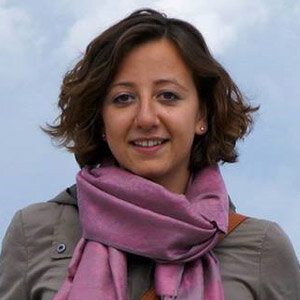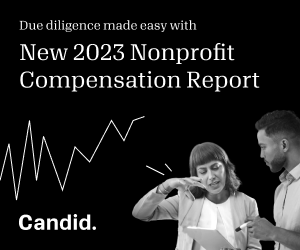Incorporating grassroot ethos into corporate philanthropy

After a decade of working in nonprofit management, last year I took the position of director of social impact at the direct healthcare company Nomi Health, leading its corporate social responsibility (CSR) work. Jumping from nonprofits to CSR may not seem like a big change to the outside observer, but for those of us who come from the nonprofit world, the on-the-ground, community impact of nonprofits can be a far cry from the top-down approach of many corporate CSR programs.
Now a full year into my new position, I’ve learned a great deal about how to better serve and incorporate the grassroots ethos of nonprofits into my work as a CSR leader. Here are the most salient lessons learned that I hope to share with others looking to make a meaningful impact:
Let nonprofits lead the way. As a nonprofit employee, I filled out too many grant applications that asked nonprofits to shape-shift their work to fit into the goals of corporate programs. That’s why, when I moved to the CSR side, I was excited to take a different approach and first ask nonprofit leaders, “How we can serve the needs of your people and community?” and not the other way around. In countless conversations with nonprofits over the past year, I’ve taken a listening-first strategy to learn about the issues in communities across the country and then ask how my company’s philanthropic arm may be able to partner with them to help.
This approach is critical to avoid “mission creep,” which I saw far too often in the nonprofit space—the tendency of nonprofits to add programs or services that aren’t core to their mission in order to meet certain grant requirements and secure urgently needed funding. While that money may temporarily help meet nonprofits’ financial needs, it doesn’t benefit communities for CSR leaders’ top-down directives to distract nonprofits from their core work. Nonprofits should dictate what their core mission and needs are, and CSR leaders should listen. CSR employees also need to realize that nonprofits have limited bandwidth and have to stay laser-focused on their mission to make an impact. And as a side note, nonprofits definitely don’t have time for onerous application and reporting requirements—so please streamline the process and lighten them up!
Keep it local. It’s critical to tailor programs to the needs of individual communities and regions. When it comes to meeting the needs of the communities we serve, a one-size-fits-all approach will not work. That’s why, in helping to create and launch a charitable foundation for my company this year, we made one of our pillars “Community-Specific Social Determinants of Health” in order to center the differentiated demands of our communities. Why would we expect the same programs that work in Omaha, Nebraska, to also work in Salt Lake City, Utah, or Miami, Florida? They often don’t, so now I spend a lot of my time meeting with and talking on the phone to nonprofit leaders across the country about how we can give in ways that meet the needs of their individual communities.
I’m proud of the grassroots approach we’ve taken, and to date, we have partnered with more than 70 local nonprofits nationwide. For example, in Utah, air quality is a huge determinant of health, as the landscape contributes to smog and other extreme pollution. To help address this harmful issue, we joined forces with local organization Utah Clean Air Partnership (UCAIR) on a gas can exchange to help promote high-efficiency gas cans, which lead to less air pollution. This is an extremely localized strategy, but one that will help people in Utah stay healthy for years to come.
Be creative. Big societal problems require creative, flexible solutions. As a nonprofit leader, I thought creatively about how we can tackle big problems, and as a CSR head, I’m doing the same. Nowhere is this more evident than with the Frontline Futures Program—Nomi Health Charitable Foundation’s signature program aimed at supporting people pursuing careers in health care. While most CSR groups looking to invest in boosting the healthcare workforce focus on tuition support or job training, we have worked to provide “wraparound services.” These range from transportation and housing stipends to child care or food assistance, because we know that the barriers keeping people of all ages from finishing school and joining the healthcare workforce are certainly not limited to the school itself.
People’s lives don’t exist in a silo, and neither should the work of CSR. Thinking creatively and holistically about the needs of the people we seek to serve will make our work more effective and valuable to the communities where we work and give. So if an employee or nonprofit leader has a creative idea for a big problem, listen closely and don’t be afraid if their idea doesn’t fit a traditional mold. Because it may just work.
When an opportunity came up to lead the CSR initiatives of a company that was truly committed to thinking differently, I couldn’t say no. With building and now launching the new Nomi Health Charitable Foundation, we’re putting a stake in the ground that philanthropy is a critical part of our company’s ability to make an impact, and I believe this is true for all companies, especially those in the healthcare and social services space. As a leader of this work I’m committed to making sure that our CSR and philanthropic initiatives are effective.
Having seen both sides, I know that we can find success in letting nonprofits lead the way, keeping it local, and being creative. I hope my experience can help other CSR leaders make an impact in their companies and communities as well.
Rebecca Armstrong Langle is executive director of the Nomi Health Charitable Foundation.








Putting a systems change approach into practice: Five lessons learned